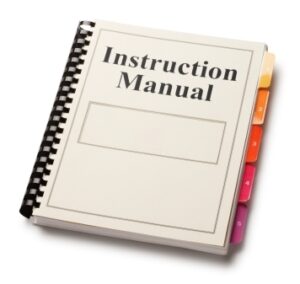By Rose O. Sherman, EdD, RN, NEA-BC, FAAN
The following story is a familiar one that I hear from nurse managers today:
“I feel like I work 24/7 now. My younger staff seem to want access to me at all times. They are so used to instant gratification that they think nothing about texting me at 10 PM on a Saturday with a scheduling request three months from now. Then, if I don’t immediately respond, they ask me what is wrong with me and seem to think that I am not being supportive. Recently, when this happened, I turned the tables on the nurse and asked how she would feel if I texted her on her day off at night to ask something that could wait. She told me that she would not respond. I then said Well, why do you expect me to. She told me that she thought it was my job and could see my point.”
Setting leadership boundaries is difficult today, especially for leaders who want to be servant leaders. But here is the challenge: If you don’t set limits, you will become exhausted and burned out, and it will be hard to stay in your leadership role. A good way to set leadership boundaries is to put them in writing. That is why I like the concept of developing A User’s Guide to You, the Leader. I learned about this idea from reading a blog written by Julie Zho.
A User’s Guide to Working with You, the Leader
Introduction—Provide background information about yourself, your leadership role, and your responsibilities. What do you expect of charge nurses or assistant managers who lead in your absence? What role do administrative supervisors play in supporting the unit on night and weekend tours, and when should they be contacted? You may want to include information on your parenting responsibilities, hobbies, and what you do in your off-duty time to maintain resiliency.
How do I view success? What values underpin your view of success? Do you have a leadership philosophy or style?
How I communicate – What is your communication style? What are your preferred methods of communication (in person, email, text, phone)? How do you conduct staff meetings, and what are your expectations for participation? How quickly do you return emails or text messages? Who should your staff communicate with when you are not on the unit? What constitutes an emergency that you want to be notified about? When do you turn your phone notifications off and don’t expect to be contacted?
Potential Misunderstandings of My Leadership Style – What aspects of your leadership approach might your team misinterpret (do you have a direct approach to giving feedback, for example)? What quirks could unintentionally annoy a different personality type (ex., are you introverted? Do you dislike small talk? What is the best way for staff to give you feedback?
What do staff do that either earns or loses your trust? – What qualities do you value that help build trust? What triggers cause you to lose faith (ex., gossiping, failing to keep commitments, not accepting accountability for actions, using unplanned leave, and not giving notice)?
What are your strengths? – What do you love to do and help others with (ex., coach staff, teach, de-escalate crises)?
What are your growth areas? If you are working on weaknesses that staff can help you with, let them know (e.g., develop more tact, be timelier with feedback, and remind you to close the loop on unit problems).
What are your expectations of staff? – What do you consider professional behavior? Do you have expectations of your team that might differ from those of other leaders? What is excellent customer service from your perspective?
What is your philosophy about giving and receiving feedback? – How do you provide coaching and feedback (just in time or on a more scheduled basis)? How should staff provide you with feedback if there are problems with the unit? What are your expectations around teamwork and conflict resolution (ex., staff are expected to confront conflicts with others to prevent communication issues and potential medical errors).
Oprah Winfrey wisely observed, “We teach other people how we want to be treated.” Setting boundaries is good, but it is only the first step. Once we develop our boundaries, we need to communicate them to others. Why not start today by creating your own user guide?
© emergingrnleader.com 2025
Our Most Popular Right Now The New World of Work Workshop
Two Brand New Workshops for Your Team in 2025
*** Trending – Building Bridges Not Walls: Leading Multigenerational Work Teams – Click Here for More Information Building Bridges Not Walls
Nurse and Nurse Leader Work-Life Balance and Well-Being: Nursing Leadership Strategies for Success – Click Here for More Information WorkLife Balance and Wellbeing WS
New Book – Click Here to Buy




 LinkedIn
LinkedIn Instagram
Instagram